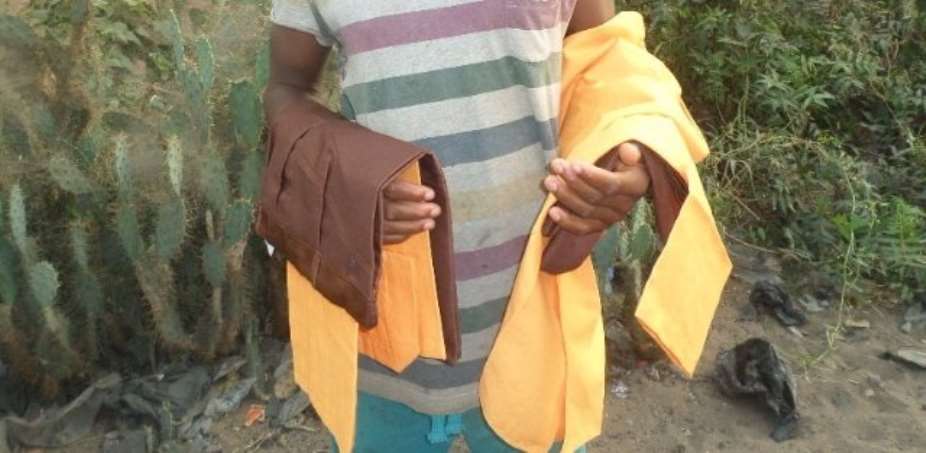A monitoring report on the free school uniforms programme that was initiated in 2009 has revealed key challenges with the government intervention.
Send Ghana, a non-governmental organisation, studied 61 schools in 30 districts in the Greater Accra, Northern, Upper East and Upper West regions and found the programme was fraught with challenges such as poor distribution guidelines, the lack of a credible schools selection criteria, scarcity of data about the programme, among others.
The report found, for instance, that the source of the garment used for the production of the free uniforms was unknown to the agencies spearheading the project, making government’s aim of boosting the local textile industry hard to assess.
“Once it is uncertain whether the garment production companies purchased locally produced fabric, it could be inferred that government’s promise of boosting local industry through the procurement of fabric for the uniforms and use the services of local tailors and seamstresses for sewing may not have been achieved,” the report said.
Also, in some cases, pupils received over-sized or under-sized uniforms.
“It was revealed during validation that mix-up in the labeling of uniforms packages, poor sorting of uniforms per the measurement coupled with weak supervision results in sending wrong sizes of uniforms to schools,” the monitoring report recounts.
At the launch of the report in Accra on Wednesday April 26, 2017, Senior Programme Officer at Send Ghana, Harriet Nuamah Agyemang, said the free uniform programme’s aims of increasing access to enrolment, reducing poverty and boosting local industry would not be achieved unless the Ghana Education Service (GES) the Finance Ministry and other stakeholders streamline the initiative towards effectiveness.
She said the study found that currently, only seven large companies produced in cities and while this created employment for citizens at these cities, “it denied local tailors and dressmakers in the beneficiary districts job opportunities associated with the programme.”
Recommendations
The GES should ensure that the criteria for selecting beneficiary schools and needy pupils are adhered to so that the intervention would benefit the poor and vulnerable.
The Ghana Education Service should enforce guidelines (if any) for the distribution of uniforms. The guideline should also be made available to all regional and district directorates to guide implementation of the intervention. This will prevent over or under supply of uniforms to schools. By so doing, adequate uniforms will reach schools that really need them.
The Ministry of Education should reconsider its decision and renegotiate and award fabric production contract to local textile industries in Ghana. Until renegotiation is done, the Ministry should also encourage the garment production companies to purchase fabrics from local textile manufacturers. We believe that the propensity for the intervention to boost local textile industries and generate employment for textile workers is high and would contribute to reducing unemployment situation in the country.
It is critical for the GES to establish the cause of declined enrolment in schools benefiting from this and other interventions such as capitation grant, school feeding and subsidy for BECE registration among others in order to address the situation.
Chairman of Parliament’s Education Committee, and MP for Jaman North, Siaka Stevens, commended Send Ghana for report and urged the media to assist the efforts of the NGO.
“The way you put emphasis on the galamsey issue, you should equally do the same when it comes to issues of education,” he urged the media.
Story by Ghana | Myjoyonline.com | George Nyavor | [email protected]





 List of 24 ministerial nominees approved by Parliament
List of 24 ministerial nominees approved by Parliament
 You were my inspiration, made me who I am today – Lilian Kumah
You were my inspiration, made me who I am today – Lilian Kumah
 Rainstorm destroys Hohoe E.P. Senior High School building
Rainstorm destroys Hohoe E.P. Senior High School building
 John Kumah strongly supported me to become NPP flagbearer – Bawumia reveals
John Kumah strongly supported me to become NPP flagbearer – Bawumia reveals
 Late John Kumah urged me to run for NPP flagbearer, strongly supported me — Bawu...
Late John Kumah urged me to run for NPP flagbearer, strongly supported me — Bawu...
 Akufo-Addo appoints Joseph Kpemka as Deputy MD of BOST
Akufo-Addo appoints Joseph Kpemka as Deputy MD of BOST
 Ablakwa petitions CHRAJ to investigate sale of SSNIT's hotels to Rock City Hotel
Ablakwa petitions CHRAJ to investigate sale of SSNIT's hotels to Rock City Hotel
 MoF to provide new bailout for defunct Gold Coast Fund investors – Bawumia revea...
MoF to provide new bailout for defunct Gold Coast Fund investors – Bawumia revea...
 OMCs implement price adjustments despite International petroleum price declines
OMCs implement price adjustments despite International petroleum price declines
 Petition to remove Kissi Agyebeng will disrupt operations of OSP – Martin Kpebu
Petition to remove Kissi Agyebeng will disrupt operations of OSP – Martin Kpebu
